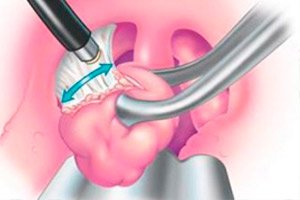
All iLive content is medically reviewed or fact checked to ensure as much factual accuracy as possible.
We have strict sourcing guidelines and only link to reputable media sites, academic research institutions and, whenever possible, medically peer reviewed studies. Note that the numbers in parentheses ([1], [2], etc.) are clickable links to these studies.
If you feel that any of our content is inaccurate, out-of-date, or otherwise questionable, please select it and press Ctrl + Enter.
Removal of tonsils in children affects urinary incontinence
Last reviewed: 02.07.2025
 ">
">Surgical resection of tonsil tissue and adenoid growths is a common surgical intervention prescribed to children with chronic and recurrent tonsillitis and pharyngitis. Sometimes the operation is accompanied by the removal of adenoid tissue. Scientists have noted that adenotonsillectomy, which was performed on children suffering from obstructive sleep apnea, contributed to the reduction of episodic nocturnal enuresis.
The results of the research work were published by the specialists in the pages of the journal JAMA Otolaryngology Head&Neck Surgery.
Scientists have long proven the existence of a relationship between nocturnal enuresis and sleep apnea, a condition in which respiratory activity is suddenly interrupted during sleep, abruptly resuming after a short break. Nocturnal enuresis is diagnosed in almost half of children with this syndrome. It has been established that the cause of the pathology is often associated with a hypertrophic increase in the lymphoid-epithelial pharyngeal ring, a large accumulation of lymphoid tissue in the mucous membranes of the upper respiratory tract. The apparatus is represented by the pharyngeal, lingual, laryngeal, tubal and palatine tonsils, as well as single follicles located in the mucous tissues of the pharynx and oropharynx. The researchers set themselves the goal of checking whether neutralizing the cause of the obstructive disorder can affect episodic nocturnal enuresis.
The study involved about four hundred children suffering from mild sleep apnea. The average age of the participants was 6-7 years (in general, from 5 to 9 years). The children were divided into two groups. The first group included young patients who had undergone adenotonsillectomy. The second group included children who were observed and closely monitored by doctors. The study lasted more than six months. After about seven months, the scientists summed up the results and noted that in the second observed group, the frequency of nocturnal enuresis was approximately twice as high as in the group of children who had undergone adenotonsillectomy. At the same time, the researchers indicated a decrease in the frequency of episodic enuresis by 11% in patients after tonsillectomy.
The explanatory information to the research paper states that nocturnal enuresis was more often diagnosed in girls. Attention was also paid to age characteristics, race and ethnicity of the subjects, tendency to obesity, and the hypopnea/apnea ratio. No link was proven between these factors and improved well-being of the children.
As the team of researchers explained, the results of their work are indeed very important. Children suffering from nocturnal enuresis should be examined by a pediatric otolaryngologist. It is important to promptly assess the presence of clinical indications for adenotonsillectomy.
